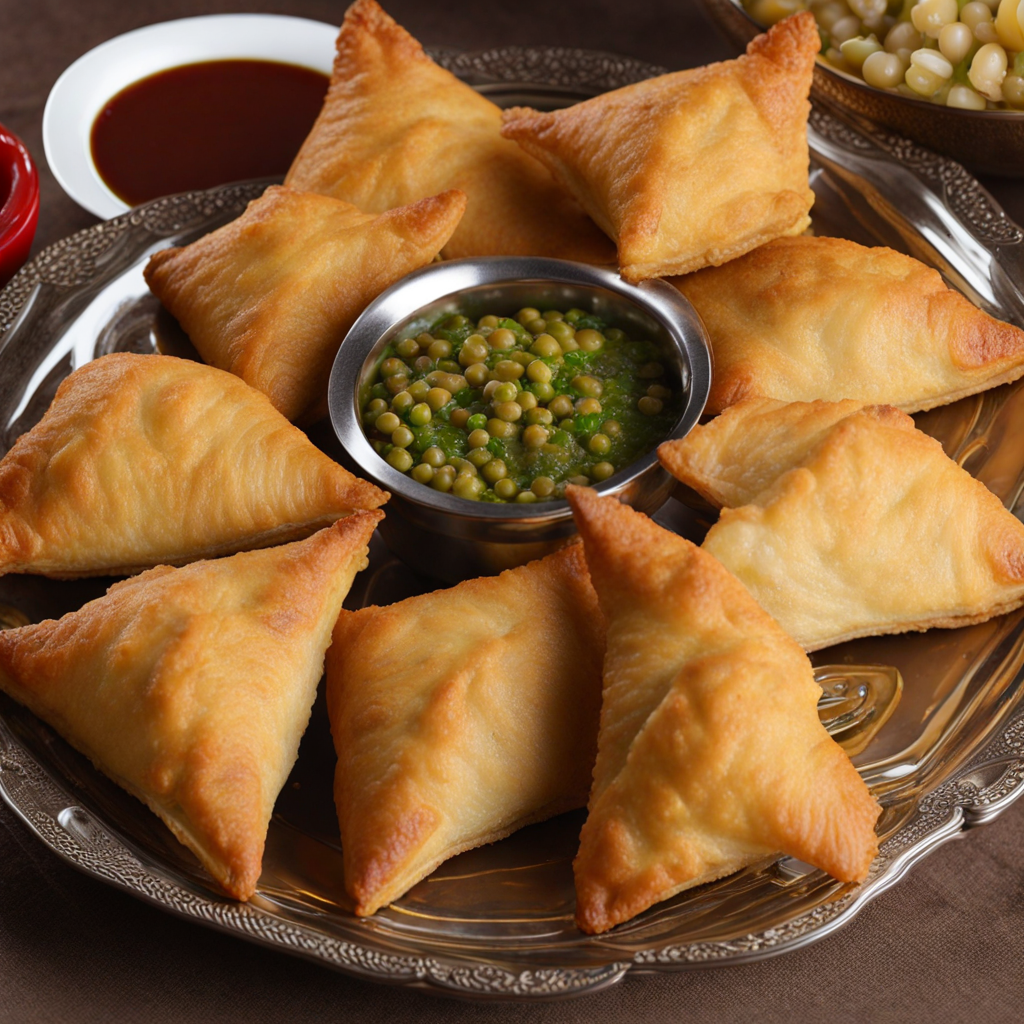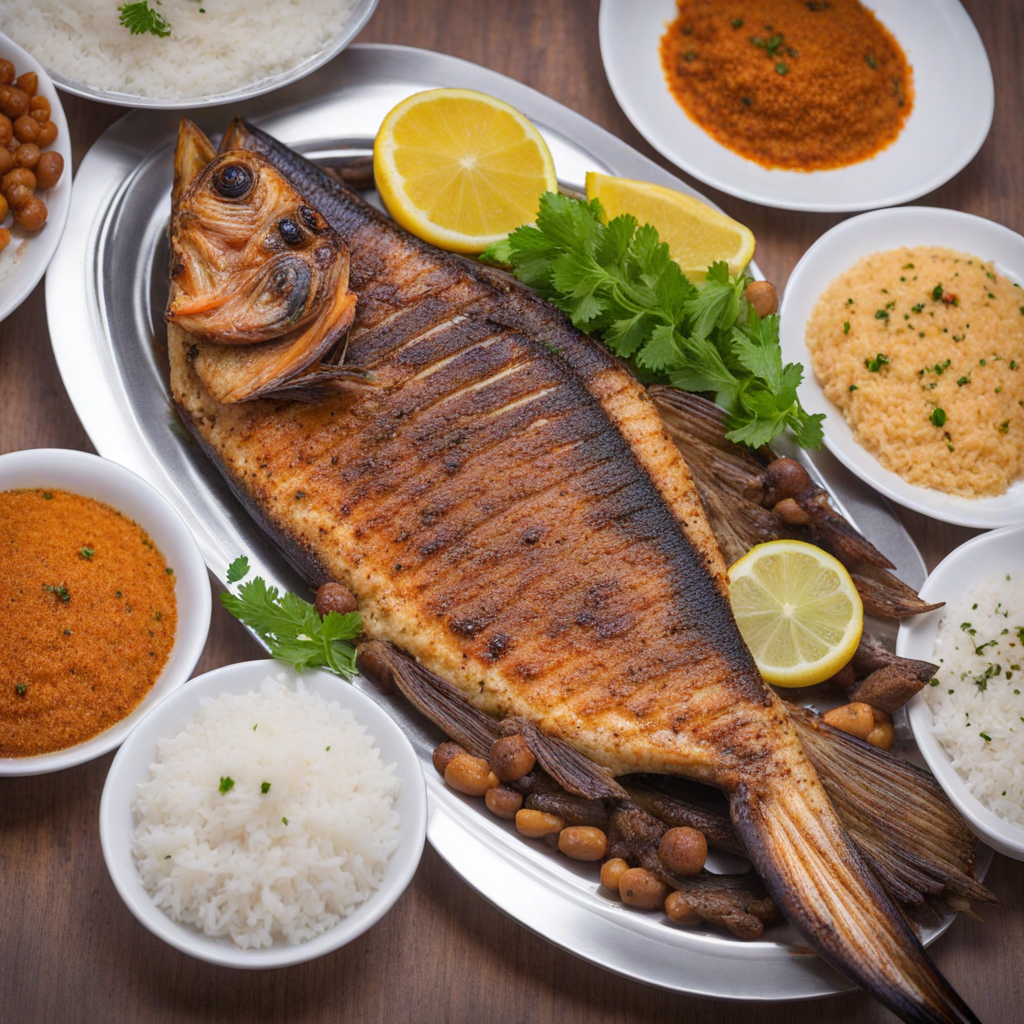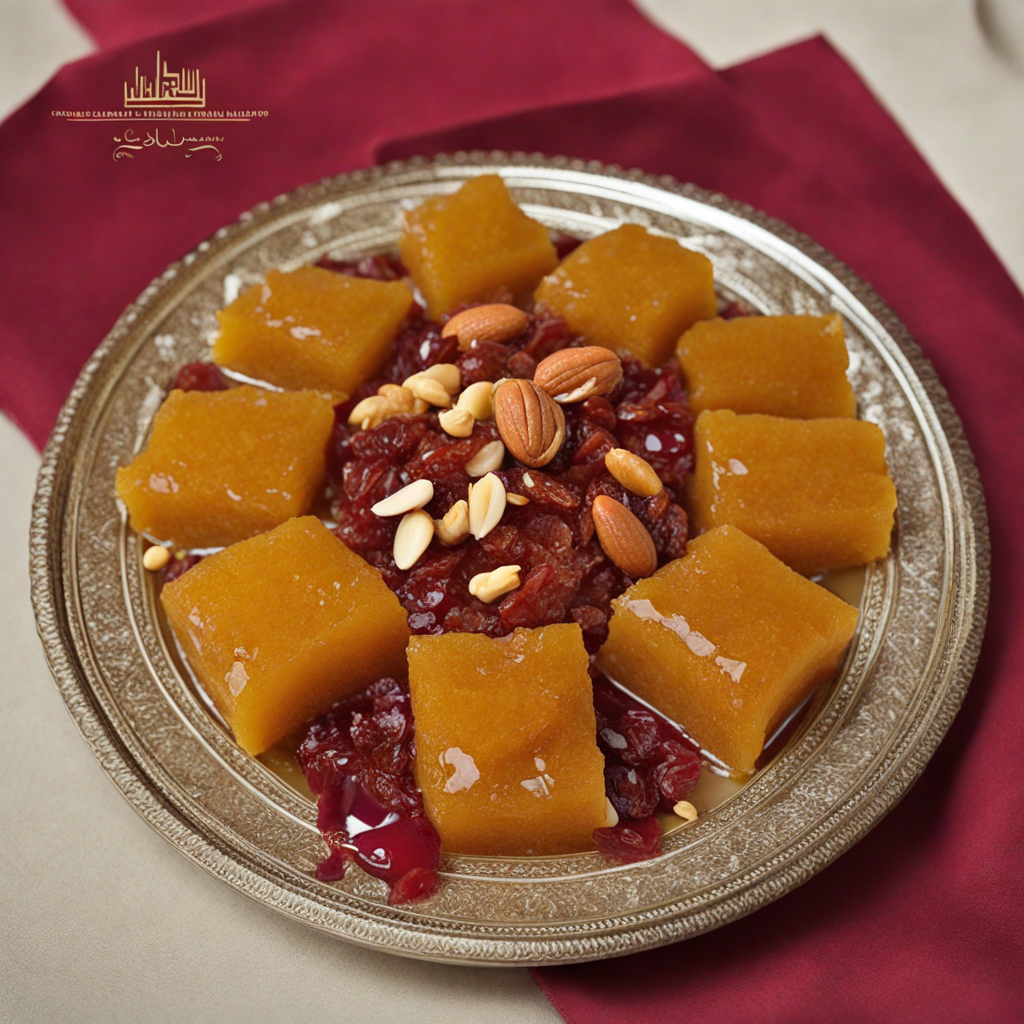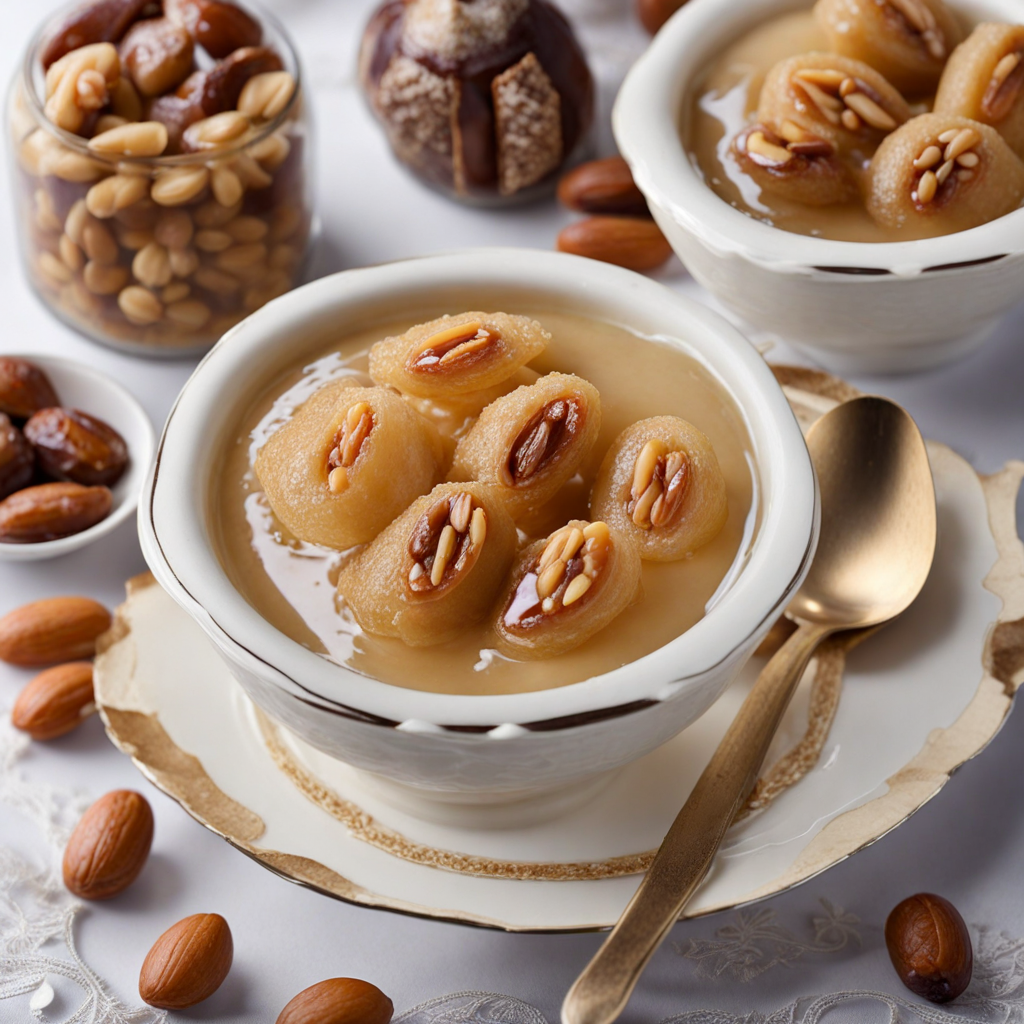Samboosa
Samboosa, a beloved dish from Bahrain, is a delightful pastry that combines a crispy exterior with a savory filling, making it a popular snack or appetizer. These triangular-shaped treats are typically made from thin dough, which is folded and filled with an array of ingredients. The fillings can vary widely, ranging from spiced minced meat, such as lamb or chicken, to vegetarian options like potatoes, peas, and onions, often seasoned with aromatic spices like cumin and coriander. The dough is then deep-fried to golden perfection, resulting in a delectable crunch that contrasts beautifully with the tender filling inside. The flavor profile of Samboosa is a harmonious blend of spices and textures, creating a unique eating experience. As you take a bite, you’ll first encounter the satisfying crunch of the outer layer, followed by the burst of flavors from the seasoned filling. The use of fresh herbs and spices not only enhances the taste but also gives the dish a fragrant aroma that tantalizes the senses. Whether enjoyed on their own or accompanied by a tangy chutney or yogurt sauce, Samboosa offers a taste that is both comforting and exotic. This dish is often enjoyed during special occasions, family gatherings, or as street food, making it an integral part of Bahraini culture. The communal aspect of sharing Samboosa with friends and family adds to its charm, as everyone relishes the crispy treats together. With its perfect balance of flavors and textures, Samboosa is an inviting introduction to the rich culinary heritage of Bahrain, promising a delightful experience for those eager to explore new tastes.
How It Became This Dish
The History of سمبوسة (Sambusa) in Bahrain Introduction The سمبوسة (sambusa), a beloved pastry enjoyed throughout the Middle East and South Asia, holds a significant place in Bahrain’s culinary landscape. Often filled with spiced meats, vegetables, or lentils and deep-fried to a perfect golden crisp, sambusas are not just a treat for the palate but also a reflection of the rich cultural tapestry of Bahrain. This essay delves into the origins, evolution, and cultural significance of sambusa in Bahrain, tracing its journey from ancient roots to contemporary dining. Origins of Sambusa The sambusa’s history can be traced back over a millennium. The pastry is thought to have originated in the Middle East, with some historians suggesting it may have roots in Persia, where similar dishes were consumed in ancient times. The name "sambusa" itself is believed to derive from the Persian word "sambusaj," which refers to a filled pastry. Other theories suggest influences from Indian and Central Asian cuisines, particularly the samosa, which shares a similar form and preparation method. As trade routes flourished during the Islamic Golden Age, culinary techniques and foods crossed borders, leading to the sambusa’s migration across the Arabian Peninsula, including Bahrain. The sea trade routes connecting Bahrain to the Indian subcontinent and East Africa played a crucial role in introducing various spices and ingredients, enriching local flavors and cooking practices. Cultural Significance In Bahrain, sambusas are more than just a popular snack; they are a symbol of hospitality and community. Traditionally, they are served during Ramadan, the holy month of fasting, where they are often the centerpiece of iftar meals, breaking the fast after sunset. Sambusas are made in large quantities to be shared with family and friends, reinforcing communal bonds and the spirit of generosity that defines Bahraini culture. Moreover, sambusas have become a staple in festive celebrations, weddings, and family gatherings. Their presence at these events signifies abundance and joy, as the act of sharing food is deeply ingrained in Bahraini customs. The preparation of sambusas is often a communal effort, with families coming together to roll dough, prepare fillings, and fry the pastries, creating an atmosphere of togetherness and collaboration. Development Over Time As Bahrain's culinary landscape evolved, so too did the sambusa. Historically, sambusas were typically filled with spiced meat, such as lamb or beef mixed with local spices like cumin, coriander, and turmeric. However, as Bahraini society became more cosmopolitan, influenced by the various cultures that came through its ports, the fillings expanded to include a diverse array of ingredients. Vegetarian versions of sambusas gained popularity, incorporating fillings like spiced potatoes, lentils, and cheese. The introduction of modern culinary techniques and global food trends has also led to innovative twists on the traditional sambusa. Today, one can find gourmet variations filled with fusion ingredients, such as cheese and jalapeños or even dessert sambusas filled with sweetened coconut or chocolate. The cooking methods for sambusas have also evolved. While traditional deep-frying remains popular, healthier alternatives, such as baking, have emerged in response to changing dietary preferences. This adaptability showcases the sambusa’s ability to resonate with both traditional and modern tastes, ensuring its place in contemporary Bahraini cuisine. Regional Variations and Influences Throughout the Gulf region, sambusas are celebrated with slight variations that reflect local tastes and ingredient availability. In Saudi Arabia, for instance, the sambusa often features a more pronounced spice profile, while in Oman, they may be filled with a mix of meat and local vegetables. In Bahrain, the use of fresh herbs like parsley or mint in the filling adds a unique touch, distinguishing it from its regional counterparts. The influence of Indian cuisine is also evident in Bahrain’s sambusa, particularly in the preparation of spicy potato fillings and the use of chickpeas. The significant Indian diaspora in Bahrain has contributed to the popularity of these variations, integrating Indian spices and techniques into the local culinary ethos. Sambusa in Contemporary Bahrain In recent years, the sambusa has gained newfound recognition within Bahrain’s burgeoning food scene. Food festivals, culinary competitions, and social media have propelled this traditional dish into the spotlight, allowing chefs and home cooks to showcase their creativity. Innovative sambusa recipes are now shared online, with food bloggers and influencers experimenting with new flavors and presentations. Restaurants across Bahrain have embraced the sambusa, offering them as appetizers or as part of larger mezze platters. Upscale dining establishments have also taken to reinventing the sambusa, serving it in more refined styles, sometimes paired with gourmet dips or served alongside contemporary salads. Moreover, the sambusa has become a canvas for culinary storytelling, where chefs express their cultural heritage and creativity. This evolving culinary art form has sparked interest among younger generations, who are keen to preserve traditional recipes while also exploring new culinary fusions. Conclusion The sambusa, with its rich history and cultural significance, is more than just a pastry; it is a symbol of Bahrain’s culinary heritage and communal spirit. From its ancient origins to its contemporary interpretations, the sambusa reflects the island's ability to adapt and innovate while honoring its traditions. As Bahraini society continues to evolve, so too will the sambusa, remaining a cherished dish that bridges generations and cultures, celebrating the rich flavors and shared experiences that define Bahrain’s vibrant food culture.
You may like
Discover local flavors from Bahrain







